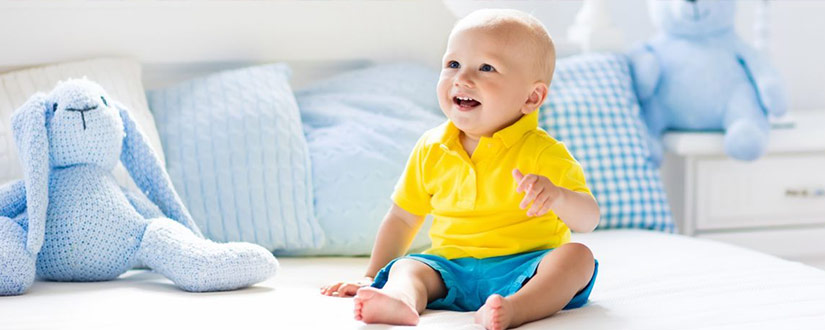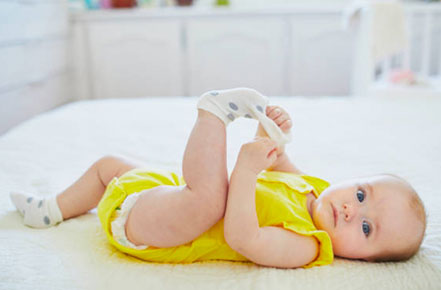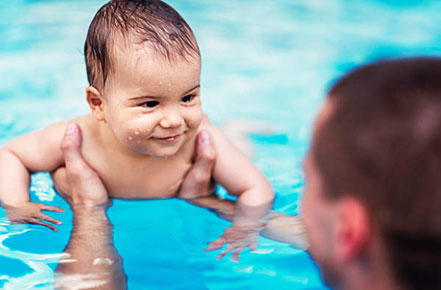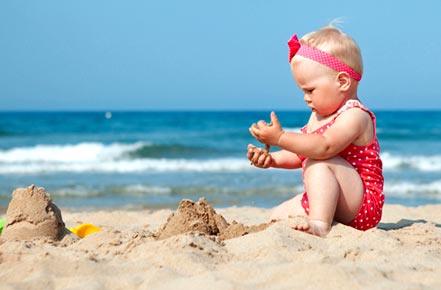Your child’s first year on this earth feels like it’s going by in a flash. A critical milestone for babies is their sitting phase because it gives them newfound freedom for exploration and plays. Instead of being in the crib, your young one can independently sit up by himself or by herself unsupported. It’s also a big boon on the parent’s end, as it makes mealtimes a bit easier. When you’re >using a ring sling, your child’s head is under your control, but after the 7th month, he/she will begin to start showing sitting practice to improve their sitting skills.
Signs Your Baby Is Ready To Start Sitting Up
The average age for a baby to sit up is typically the later part of the first year. For an exact time of how old are babies when they sit up, most of them begin to practice between the 7th and 9th month. When they sit up, there are a few key things that can be observed:
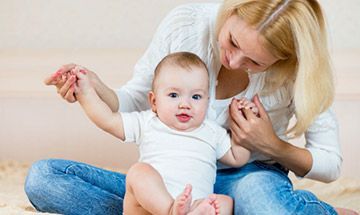
Body Motions
Body Awareness
Wobbling Practice
- Giving your kid plenty of practice. Observe him/her from a distance to let explore on his/her own and experiment by themselves.
- Giving them more “floor time” to foster independence instead of placing them in a seat positioner. Do this at least twice a day with the help of some baby sitting toys to maintain the interest.
- Sitting your young one between your legs or by your lap. Read him/her different books or sing songs that encourage them to move about.
- After your baby has gained a bit more independence, you can place padding or a pillow around his/her environment to give more room safely.
- Install outlet covers in every room that your baby can enter.
- Secure areas and items accordingly. You can get the best floor mats, cabinet locks, furniture anchors, toilet locks, baby gates, toilet locks, and other supplies to baby-proof your home.
- Put away or throw out choking hazards and toxic products out of a child’s reach, preferably under lock and key. One right way of finding out your baby’s reach is to follow them around and observe their limits.
- After your baby can sit, you can adjust the crib to a lower level. When do babies start sitting up might be a question that’s already been answered, but this presents another hurdle –pulling up. Your baby can start practicing the skills by pulling themselves up into the mattresses.
- If you have high chairs or baby sitting furniture in your home, you can install safety belts into them for an extra measure of security. Your baby might need that extra bit of support that straps can provide, especially if he/she’ll be sitting for a longer time frame. Also, never place a seat on an elevated surface, near a dangerous appliance, or near deep water.
- Loose movements
- Tight or stiff muscles
- Only uses one hand when reaching for something
- Doesn’t have adequate head control
- Doesn’t like reaching or bringing objects into the mouth.
- Pulling themselves up to stand
- Baby crawling or creeping by his/her own
- Moving through the house while holding surrounding furniture for support.
- Walking without any assistance
One clear sign that your girl or boy sitting is beginning is that he/she can control the head properly without any wobble. Other motions will be done in a more upright posture that’s purposeful and controlled. Babies that are showing signs of sitting up without support includes pushing themselves upward when they’re lying down, or even rollover. Your baby sitting up for longer periods is also a clear sign. Regardless of the baby skills, you should always be there to support them in case anything happens.
When do babies sit up unassisted? – When they have a sharper sense of body awareness. A baby sitting means that your little one is taking a clear step toward his/her independence. Baby sitting unassisted typically begins at the end of a child’s first year, but this isn’t always the case. So asking at what age do babies sit up won’t get you anywhere. At this stage, babies start experimenting with different positions like the tripod position where they can support themselves with their hands on the floor. It is a clear sign that they’re starting to develop more body awareness.
Sitting for babies is mainly instinctual, so there’s often no need to know how to teach baby to sit up or to help baby to sit upright. During child’s first steps, he/she doesn’t have much balance. But as baby continuously practices, he/she’ll be a sitting pro in a short amount of time.
What Age Do Babies Sit Up?
It is a common question among first-time parents. “When do babies sit up on their own?” “At what month baby start sitting?”, or “When do babies sit up by themselves?”. As we’ve said before, the age your child can be ready is a case-by-case basis. Your kid might not be within the typical 4-7 month range, but that doesn’t mean there’s a problem. By 8 months, though, your kid should already have mastered sitting, with a few occasional hiccups.
How Babies Learn To Sit Up

Indeed, you can just prop your baby up to make him/her sit. But this is sitting up with support. What you want them to learn is independent sitting, or sitting without support from a grown-up. As early as 4 months, they’ll begin to raise their heads without the help of a pillow. Afterward, they’ll figure out by themselves that they can push their bodies out of lying down and prop themselves up.
How To Help Baby Sit Up
You know what they say, “Practice makes perfect.” You can help out passively by offering your baby more opportunities. You can take them out of the newborn stroller and give them more floor time, for example. Independent sitting requires a controlled shift in weight in different directions. It takes plenty of practice and strength for your baby, but you can help them out by:

Tummy Time Woes

Tummy time makes for an important step to an independent sitting position. If your child doesn’t like to play lying down for longer periods, you can cut down the times and do it multiple times a day. Make sure that your baby has had plenty of rest, a fresh diaper, and a clean mouth using a gum toothbrush. By starting this activity at his/her best, they’ll have a higher chance of succeeding. Get into a similar laying position and try to motivate them to remain in this position for a longer period. One trick is to place a mirror on the floor so they can see his/her faces.
Tips On Sitting Safety
Your baby might just be learning to sit, and you want to give a little bit of support. You can use soft materials like pillows to give him/her a safer environment to explore in, but never leave your baby unattended when he/she is propped.
Granted, your baby isn’t zooming about the house just yet, but sitting gives you a clear sign that it’s now the time to give your home a baby-proofing makeover to prepare for their enhanced mobility.
What If Baby Doesn't Sit Up?
On the off chance that your baby is still not sitting up by themselves at nine months, you should consult with your pediatrician. It’s always best to act with haste than putting it off for later. At this stage, your child should have already reached the goal with little to no baby sitting support. “When will my baby sit up by herself?” The developmental speed differs per child, but it could potentially be a symptom of motor skill delay if your baby can’t sit up for longer than nine months.
Different signs of delay include:
If you think that your child is experiencing a delay in the development, always speak with a medical professional first. They could direct you to specialized services for young children, such as an intervention program for kids.
After your baby sits up – what's next?
What now? Your child has already mastered baby sitting, and your questions about how and when babies can sit up have been answered. You should expect a steady progression in your child’s development, and it typically goes like this:
We hope that our guides here at Parenthoodroutine have helped your child gain independence and smoothen out the transition periods of lying down to sitting. Always observe your kid and help to practice, because there will always be the occasional accident. Strengthening muscles through training will improve your baby’s health and increase his/her confidence.
Contents


